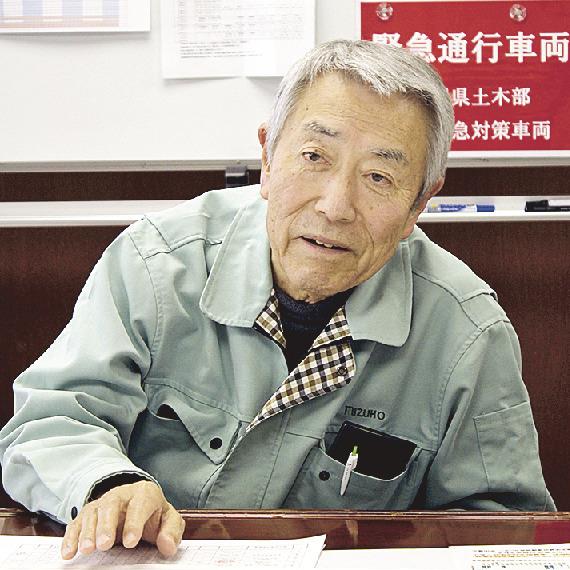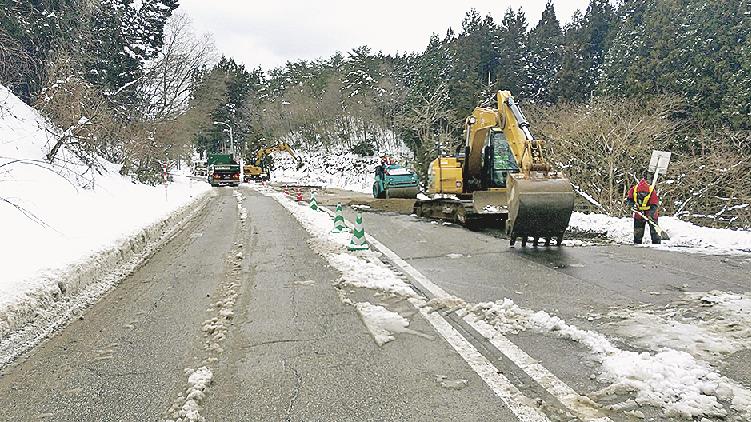Local construction companies continue to carry out recovery and relief efforts in areas affected by the Noto Peninsula earthquake. Immediately after the disaster, member companies of the Ishikawa Prefectural Construction Industry Association participated in emergency response such as clearing roads, procuring and transporting materials and equipment, and transporting emergency relief goods. At the request of the province, we have also started building housing for natural disaster victims. President Tamotsu Hirasakura said about the current situation, ``Companies and people affected by the disaster are working with passion to do something for their homeland. I am grateful beyond words.''

Chairman Hirasakura expressed gratitude to member companies, saying: ``I cannot thank them enough.''
Since the disaster occurred on the 1st, Ishikawa Kenkyo has received requests from Ishikawa Prefecture to clear roads, etc., and also requested the Hokuriku Area Development Bureau of the Ministry of Land, Infrastructure, Transport and Tourism to supply and transport materials and equipment, and to transport emergency relief goods to affected areas. Among the nine regional associations of Ishikawa Kenkyo, associations in Suzu, Otoriwa, Nanao Kashima, Hakui District City and Kahoku District City received requests from their respective areas.

Emergency response continues in various areas of the prefecture (Suzu City on the 26th, provided by Makara Construction)
To clear the road, companies from the Kanazawa, Hakusan Nonoichi, Komatsu Nomi and Kaga associations, located in areas with less damage than the tip of the peninsula, headed to the damaged areas from the 2nd. Teams of three to four people were formed and sent on a two-night, three-day trip. They brought a hydraulic excavator (0.4 cubic meter), fuel, food, generator and worked hard to respond to the emergency while sleeping in their car. “Now we can use 0.7 cubic meter heavy equipment and work efficiency is improving,” he said.
There are many damaged and collapsed roads, and the need for crushed stone to fill cracks and spread on large sandbags is huge. It is estimated that more than 2.5 million cubic meters will be needed. Initially, in some places it took up to 17 hours to transport crushed stone. Currently, prefectural land near IC Todakita Otsu on the Noetsu Expressway is used as the primary collection point, and secondary transportation is being done to various locations. However, due to the limited number of vehicles and road conditions, there are some locations where only one round trip can be made per day.
“What the people of Noto have always had in common is patience and a great spirit of community solidarity,” said President Hirasakura. Communicate daily with local association leadership. ``There is a sense of crisis as many different problems occur at the same time, but they are working to clear the way and fix them. The connection and strength of the organization was demonstrated as the group formation process progressed rapidly.''
Some staff are arriving at the site from the evacuation centre. Some company presidents worry that their company buildings will be damaged and that only half of their employees will be able to come to work, and that young employees will not be able to return from evacuation sites. . ``I hope they will somehow be recognized for their contributions to the community'' as several companies are taking on snow removal duties in addition to regular public and private construction work for victims of natural disasters.''
He pointed out, ``In addition to how to restore the area, we also need to think about what to do with the area in the future. We need to think about how to ensure the continued survival of the construction industry.'' A disaster occurred in a region with problems of population decline and aging. There are also concerns that in some areas it may be difficult to restore the entire infrastructure to its original state. There is a need for urban development that takes into account preparedness for the next disaster and sustainability of the region.
On the 25th, Hokuriku Railway's bus service connecting Kanazawa City, Wajima City, Suzu City, etc. was partially resumed. "Let's all work together for the disaster area." As the results of the recovery efforts began to accumulate, morale at the site grew.






